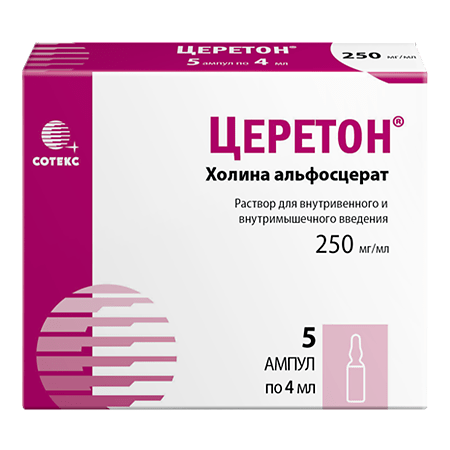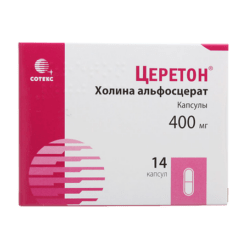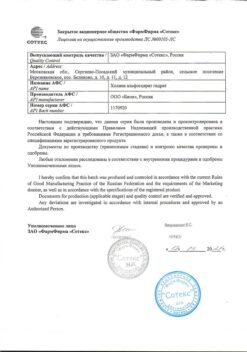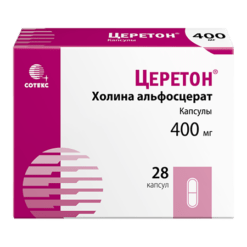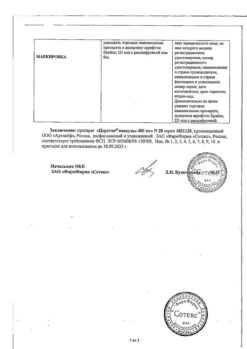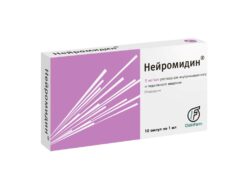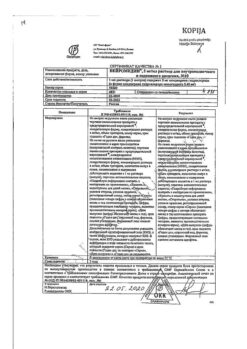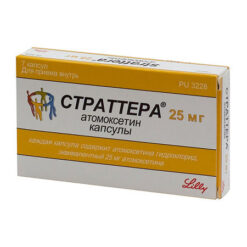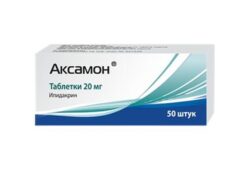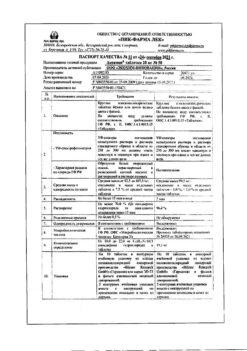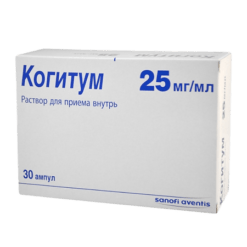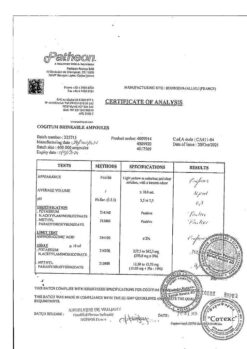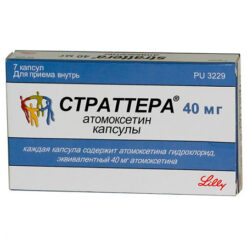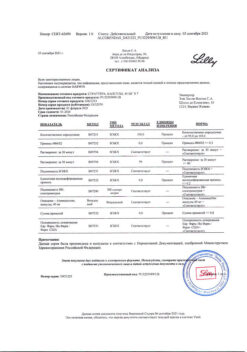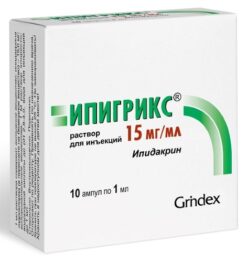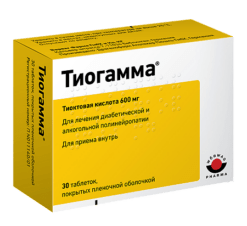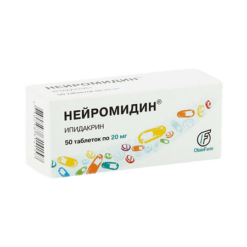No products in the cart.
Cereton, 250 mg/ml 4 ml 5 pcs
€17.70 €15.34
Description
Pharmacodynamics
Cereton is a nootropic. It is a central cholinostimulant containing 40.5% metabolically protected choline. Metabolically protected promotes the release of choline in the brain. It provides synthesis of acetylcholine and phosphatidylcholine in neuronal membranes, improves blood flow and enhances metabolic processes in the central nervous system and activates reticular formation.
increases linear velocity of blood flow on the side of the traumatic brain injury, promotes normalization of spatiotemporal characteristics: spontaneous bioelectrical activity of the brain, regression of focal neurological symptoms and restoration of consciousness; has a positive effect on the cognitive and behavioral responses of patients with cerebral vascular disease (discirculatory encephalopathy and residual effects of cerebral circulatory disorders).
It has preventive and corrective effect on pathogenetic factors of involutional psychorganic syndrome, changes phospholipid composition of neuron membranes: participates in the synthesis of phosphatidylcholine (membrane phospholipid) and improves neuronal membrane plasticity. Stimulates dose-dependent release of acetylcholine under physiological conditions, improves synaptic transmission and receptor function. It has no effect on the reproductive cycle and has no teratogenic and mutagenic effect.
Pharmacokinetics
When administered parenterally (10 mg/kg) Cereton predominantly accumulates in the brain, lungs and liver. Absorption is 88%, easily penetrates through the blood-brain barrier (when administered orally, the concentration in the brain is 45% of that in plasma). The lungs excrete 85% of the drug as carbon dioxide, the remaining amount (15%) is excreted by the kidneys and through the intestines.
Indications
Indications
Acute and recovery periods of severe traumatic brain injury and ischemic stroke, recovery period of hemorrhagic stroke, occurring with focal hemispheric symptoms or symptoms of brain stem damage;
psychoorganic syndrome against the background of degenerative and involutional changes in the brain;
cognitive disorders (impaired mental function, memory, confusion, disorientation, decreased motivation, initiative and ability to concentrate), including dementia and encephalopathy;
senile pseudomelancholy
Pharmacological effect
Pharmacological effect
Pharmacodynamics
Cereton is a nootropic drug. Central anticholinergic stimulant, which contains 40.5% metabolically protected choline. Metabolic protection promotes the release of choline in the brain. Provides the synthesis of acetylcholine and phosphatidylcholine in neuronal membranes, improves blood flow and enhances metabolic processes in the central nervous system, activates the reticular formation.
Increases the linear speed of blood flow on the side of traumatic brain injury, promotes the normalization of spatiotemporal characteristics: spontaneous bioelectrical activity of the brain, regression of focal neurological symptoms and restoration of consciousness; has a positive effect on the cognitive and behavioral reactions of patients with vascular diseases of the brain (dyscirculatory encephalopathy and residual effects of cerebrovascular accident).
It has a preventive and corrective effect on the pathogenetic factors of involutional psychoorganic syndrome, changes the phospholipid composition of neuronal membranes: participates in the synthesis of phosphatidylcholine (membrane phospholipid), improves the plasticity of neuronal membranes. Stimulates the dose-dependent release of acetylcholine under physiological conditions, improves synaptic transmission and receptor function. Does not affect the reproductive cycle and does not have a teratogenic or mutagenic effect.
Pharmacokinetics
When administered parenterally (10 mg/kg), Cereton predominantly accumulates in the brain, lungs and liver. Absorption – 88%, easily penetrates the blood-brain barrier (when taken orally, the concentration in the brain is 45% of that in plasma). The lungs excrete 85% of the drug in the form of carbon dioxide, the remaining amount (15%) is excreted by the kidneys and through the intestines.
Special instructions
Special instructions
Cereton does not affect the speed of psychomotor reactions.
Active ingredient
Active ingredient
Choline alphoscerate
Composition
Composition
1 ampoule (4 ml of solution for intravenous and intramuscular administration) contains:
active ingredient:
glycerylphosphorylcholine hydrate in terms of anhydrous glycerylphosphorylcholine (choline alphoscerate) – 1000 mg,
excipients:
water for injection – up to 4 ml.
Pregnancy
Pregnancy
The use of Cereton during pregnancy and breastfeeding is contraindicated.
During treatment with Cereton, you should stop breastfeeding.
Contraindications
Contraindications
Hypersensitivity to the drug;
acute stage of hemorrhagic stroke;
pregnancy; breastfeeding period;
children under 18 years of age (due to lack of data).
Side Effects
Side Effects
Nausea may occur (mainly as a consequence of dopaminergic activation), in which case the dose of the drug is reduced.
Allergic reactions.
From the digestive system: constipation, diarrhea, dry oral mucosa, pharyngitis.
From the nervous system: headache, drowsiness, insomnia, aggressiveness, anxiety, nervousness, cerebral ischemia, convulsions, dizziness.
From the skin: rash, urticaria.
Other: pain at the injection site, increased urination.
Overdose
Overdose
Nausea may occur.
Treatment: symptomatic therapy.
Storage conditions
Storage conditions
In a place protected from light, at a temperature not exceeding 25 °C
Shelf life
Shelf life
5 years
Manufacturer
Manufacturer
PharmFirma Sotex, Russia
Additional information
| Shelf life | 5 years |
|---|---|
| Conditions of storage | In a light-protected place, at a temperature not exceeding 25 °C |
| Manufacturer | PharmFirm Sotex, Russia |
| Medication form | solution |
| Brand | PharmFirm Sotex |
Other forms…
Related products
Buy Cereton, 250 mg/ml 4 ml 5 pcs with delivery to USA, UK, Europe and over 120 other countries.

